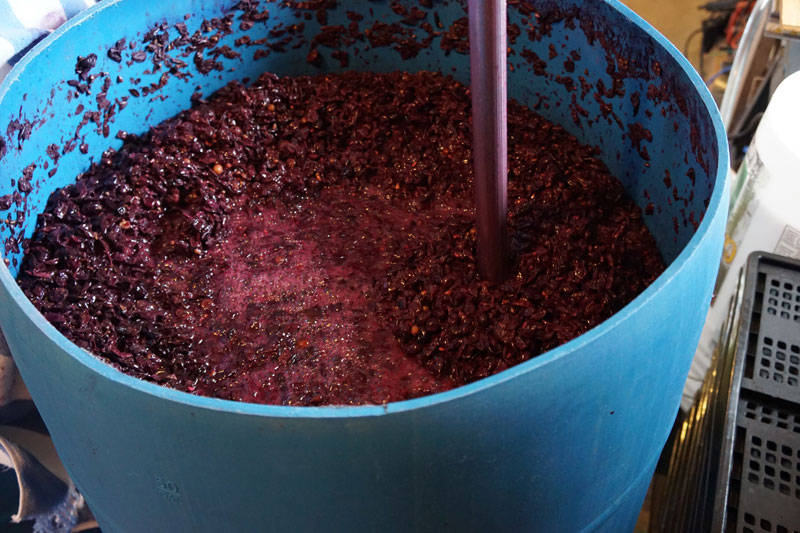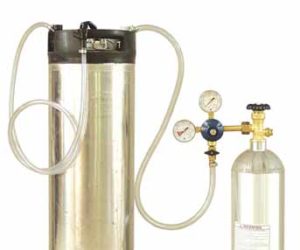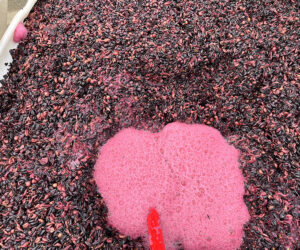
When it comes down to it, crafting red wine is basically a class in itself. Making whites, rosés, and most sparkling wines can all be clumped together to one set of rules, but making a good red wine from grapes is a different beast. Yeast selection, handling of grapes and must, fermentation protocols, and oaking are just a few ways that red wines go their own way. Let’s take a brief dive into some ways that a winemaker can assure that they are making the best with what they are provided when it comes to red wine production.
Happy Yeast
Great wine starts with happy and healthy yeast. There are several keys to coaxing the most out of your yeast for red wines: Nutrient levels, oxygen in early punchdown cycles, proper yeast selection, and using an appropriate amount of yeast. If you are making wine from a kit most of these have already been done for you. We recommend the use of a commercially produced yeast strain for beginners. Natural fermentations can be finicky.
If you are using juice or fresh grapes, sending a sample of juice away for testing its YAN (yeast assimilable nitrogen) is a great way to assess your starting parameters. If you don’t have a pH meter or a way to measure TA (titratable acidity), there is even more reason to get the sample tested professionally at a lab.
Grape Skins
We can’t talk about red wine production without a discussion on grape skins and all that they provide. This is going to be the source material for color (anthocyanins) and structure (tannins) in red wines. These are gained during fermentation for reds, when the heat of fermentation allows these compounds found in the skins (tannins are also found in stems and seeds) to transfer into the wine and alcohol helps facilitate this assimilation.
Why is this important? If you are starting with red juice or concentrates, you may want to look to add grape skin packs to the fermentation to help boost these characteristics in the wine, especially if you’re going for a bigger style of red wine. Grape skin packs are available for purchase if additional palate weight is desired.
Also if you are dealing with thinner-skin grapes like Grenache, Gamay, or Pinot Noir, or looking for a big wine, there are tricks more advanced winemakers can utilize to coax a more concentrated level of these compounds from grapes such as an extended maceration or the saignée method. Saignée will produce a small batch of rosé wine and a more concentrated red wine.
We can’t talk about red wine production without a discussion on grape skins and all that they provide.
On the other side of the coin, fresh grape winemakers may want to shorten the time spent on the grape skins when working with grapes that have excessive levels of these compounds — grapes like Tannat or Nebbiolo. But if it is noticed too late and the finished wine is excessively tannic then winemakers have several fining choices to help strip some from solution. Or, as many Nebbiolo producers in the Old World know, time will also tame tannins as they will slowly polymerize (link together) and fall out of solution.
Acidity
The acidity of red wines can act as a counterbalance to residual sweetness or general jamminess that can come from some fruit, especially overly ripe clusters. For beginner winemakers, having the equipment to test for acidity parameters such as pH and TA may be out of reach. But you can still use taste as your guide to determine when a little acid addition may be needed or deacidification in other cases.
It is important to note that wine kits have been carefully tested to produce a balanced wine. That doesn’t mean that as you progress in the hobby you cannot make these adjustments. But I find it’s just like with a new cooking recipe, it’s best to stick to the supplied ingredients and instructions the first time, then you can possibly adjust for future creations if you feel compelled.
You need to be keenly aware that acidity will change over time with the wine. Alcoholic fermentation, malolactic fermentation, and cold stabilization are potential causes for shifts in TA and pH. Backsweetening the wine is another way to balance the wine when acidity levels are too high.
Bench trials can be utilized for those with the patience. If you do decide to make an acid adjustment, work slowly towards the goal with small incremental additions, tasting as you go to make sure you don’t overshoot it. Tartaric acid is the best choice for acid additions and potassium bicarbonate will often be used to deacidify.
The Grape Dilemma
In the first section we talked about ways to boost the body of a red wine made from juice or kits with the aid of skins. If you are using fresh grapes, finding good quality grapes is paramount. Try your best to exclude grapes and clusters that you wouldn’t want to eat because of damage or rot. The cleaner your fruit that goes into the wine, the better your chances that a clean wine will be the result.
The Other Factors
There are a lot more decisions you will need to make as a winemaker to guide a red wine towards your goal. What kind and how much oak to add (if at all), malolactic decisions, aging considerations, sulfite levels, fining and/or filtering . . . the list goes on. The best advice is to take it one step at a time and just enjoy the ride.







